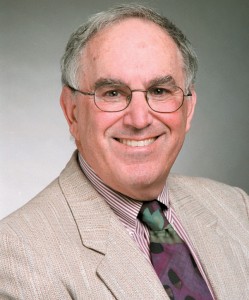In the mid-1960s in Dundee, Scotland, there was little mention of fibre (“roughage”) in my schooling. Rather, a doctor’s nutritional education was limited to physiological concepts of the metabolism of essential food groups and the understanding of energy components. There was little information about the benefits or risks of any specific dietary elements, other than vitamin deficiencies and serious conditions such as diabetes mellitus.
By Dr. Michael Gordon
 It is with a chuckle that I recall the daily breakfast served by my landlady; the most heart-unhealthy collection imaginable by today’s standards. Two eggs, bacon, a sausage, fried tomatoes and white toast with Dundee marmalade and butter were preceded by the antidote: A bowl of full-bodied porridge, which I hope diminished the main course’s negative impact.
It is with a chuckle that I recall the daily breakfast served by my landlady; the most heart-unhealthy collection imaginable by today’s standards. Two eggs, bacon, a sausage, fried tomatoes and white toast with Dundee marmalade and butter were preceded by the antidote: A bowl of full-bodied porridge, which I hope diminished the main course’s negative impact.
At the time, especially in the UK where cuisine was not a particularly high priority, fruit and vegetable intake was minimal other than during the short summer growing season. Frying everything was standard; a good order of real fish and chips could not be equalled, and even now it is one of Scotland’s famous culinary attractions. As students, we joked about Friday’s fish and chips served in newsprint wrapped around wax paper: “For two and six, you get your nutrition, education and entertainment!”
In our second year we had a guest lecture from the now-famous Dr. Denis Burkitt, the discoverer of a virus-caused malignant tumour in Africans that became treatable under his careful medical sleuthing. Burkitt became wellknown for his work in the area of heart disease, but his real claim to fame was his discovery of the role of fibre in health and the prevention of bowel cancer, heart disease and, most triumphantly, constipation.
Burkitt’s lecture started with a slide in which a group of Africans were standing beside a sizable mound of feces, while a group of white people stood beside a few fecal pellets. Burkitt’s comment of the Africans was “One minute from start to finish,” and of the whites, “15 minutes of pushing and straining.” There was a hushed moment in the class, and then laughter broke out as Burkitt continued, “Therein the cause of Western-world ills…a lack of dietary fibre.”
Burkitt’s fibre proposal eventually led to the launch and growth of the fibre industry. Its explosion resulted in a massive number of bran-fibre-containing breakfast cereals and recommendations to add bran to all kinds of baking products. Welcome the iconic bran muffin as a “health food” and a competitive breakfast-cereal industry.
It was encouraging to read a recent British Medical Journal article on dietary fibre and heart disease. “Overall, total fibre intake was inversely associated with cardiovascular risk. Only insoluble fibre (wheat bran, brown rice and other whole grains) had a significant lowering of risk.” An accompanying editorial recommended that, “Clinicians should enthusiastically and skillfully recommend more fibre in their patients’ diets.” And beyond this important study are many others supporting the hypothesis that high-fibre diets decrease the risk of bowel malignancy and, for many, improve “regularity.”
The consumer challenge is in finding a product that is right for you. There are two basic rules: (1) Check the ingredients carefully, looking at sugar content as well as fibre; and (2) add fresh or frozen fruit to your cereal, rather than using canned products that are already sweetened with glucose or corn syrup.
My favourite breakfast recipe is a combination of regular oatmeal (not the quick variety) mixed with Red River Cereal, which contains multiple grains, including regularity-promoting flax. I combine two-thirds oatmeal with one-third cereal, add water to cover and microwave for 2.5 minutes. I then add low-fat fruit yogurt rather than milk and roasted almond slivers for crunch.
Finding tasty ways to use fibre of all types in your diet will help you enjoy your food, reap health benefits and, if you’re fortunate, re regularize your life!
Dr. Michael Gordon is Medical Program Director of Palliative Care at Baycrest Geriatric Health Care System.












